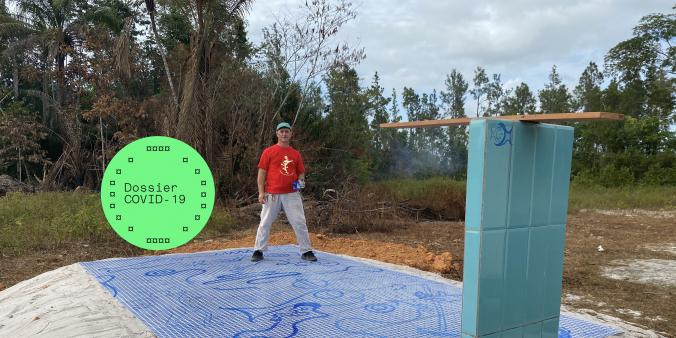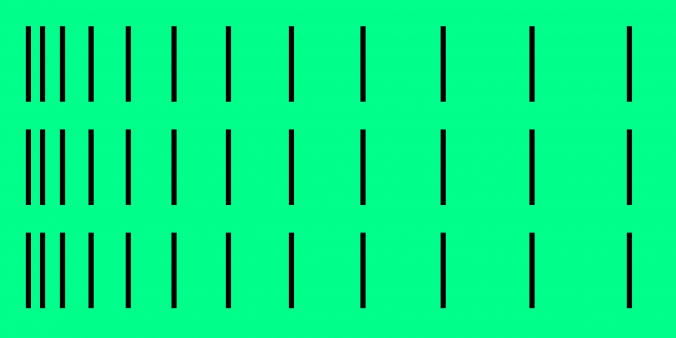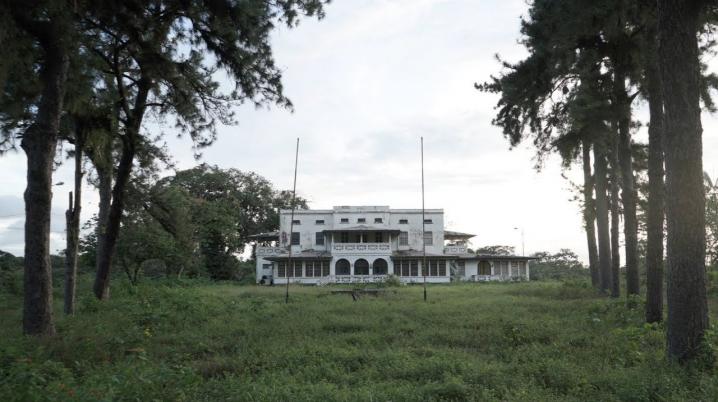
Suriname: 45 years of independence
25 November 1975
This year on 25 November it will be 45 years since Suriname gained its status as an independent nation and became the Republic of Suriname.
When remembering the Surinamese independence, it is important to keep in mind that around 1975, in Suriname there was never a widely supported independence mass movement. Instead, there was only a minor part of the Surinamese population that wanted independence. In that period the Netherlands was in the process of renouncing its colonial possessions, and because of that, and for financial reasons, it was happy to consent to Suriname’s independence. Since 1970, many people from Suriname were migrating to the Netherlands for the hope of better economic circumstances and higher education possibilities. But as the plans for an independent Suriname became more and more concrete, even more Surinamese people left the country for the Netherlands. Many Surinamese did not have any trust in an independent state and feared political unrest and a worsening of the poor economic situation. Between 1970 and 1980 120.000 Surinamese people migrated to the Netherlands, one-third of the Surinamese population.
On 21 November 1975, the statue of queen Wilhelmina was removed from the Oranjeplein in the capital Paramaribo and replaced by the national flag of the soon to be Republic of Suriname. Four days later, on 25 November 1975, after a celebratory ceremonial night in Paramaribo that was attended by princess Beatrix, queen Juliana signed the declaration of independence. Johan Ferrier was named as the first president of the Republic of Suriname, and the Oranjeplein (‘Orange Square’, after the royal colour of the Netherlands) was renamed the Onafhankelijkheidsplein (Independence Square).
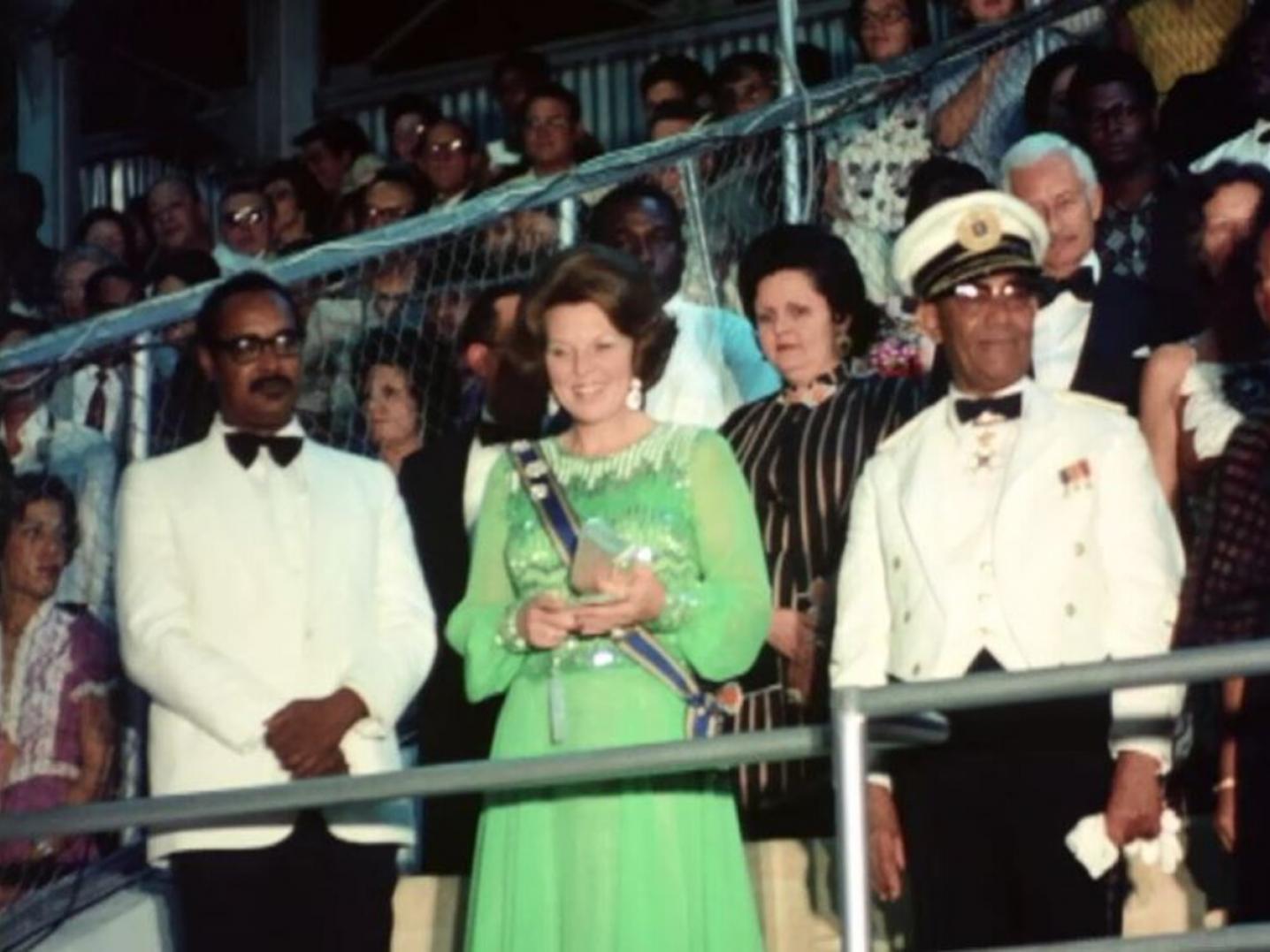
Surinamese identity through film and literature
After three centuries of Dutch reign, what was left of the country that used to be populated solely by the indigenous people? What was Suriname in 1975 other than a constructed plantation colony populated by various ethnicities of which most were brought there by the Dutch to work for Dutch enterprises? The quest for a sense of belonging and Surinamese identity was present long before the independence but became all the more important afterwards. This quest was and still is, an important theme in the works of writers, poets and other artists. Some of the works that came into being alongside this theme gained iconic status over the years and became an important part of the annual independence remembrance.
National Anthem
God zij met ons Suriname.
Hij verheff’ ons heerlijk land.
Hoe wij hier ook samen kwamen
aan de grond zijn wij verpand.
Strijdend houden w’ in gedachten
Recht en waarheid maken vrij.
Al wat goed is te betrachten.
Dat geeft aan ons land waardij.
Opo! kondreman un opo!
Sranangron e kari un.
Wans ope tata komopo,
Wi mu seti kondre bun.
Stree de f’ stree – wi no sa frede
Gado de wi fesiman.
Heri libi te na dede,
Wi sa feti dji Sranan.
Opo Kondroman by Trefossa, 1959
Emancipation of Surinamese culture
Up until 1959, the Wilhelmus, the national anthem of the Netherlands, was also the national anthem of Suriname. Most of the Surinamese people knew the words by heart. As it became a constituent country of the Kingdom of the Netherlands in 1954, the wish for an own national anthem, as well as a national flag and weapon arose amongst some of the Surinamese. In 1959 these national symbols were officially introduced, and it was the Surinamese poet and writer Trefossa, pen name of Henri de Ziel (1916-1975), who wrote the new anthem: Opo Kondroman (God is with us). The first couplet of the song is in Dutch, the second part is in Sranan Tongo, which, next to the Dutch language, is the lingua franca of Suriname.
For many, the inclusion of the Sranan Tongo in the official national anthem meant an important first step in the emancipation of Surinamese culture. Also important is that De Ziel addressed all the ethnicities of Suriname: ‘Hoe wij hier ook samen kwamen aan de grond zijn wij verpand’ (‘No matter how we all arrived here we are tied to this ground’). In a way, this was a plea for unity and one Surinamese identity, but many took a sceptic stance towards it and feared that the population was so divided that unity would never be reached. In 1973 a similar poetical plea for nationalism and unity was written by Dobru, pen name of Robin Raveles (1983). He wrote the iconic poem Wan Bon, that is cited very often when it comes to Suriname’s multi-ethnic nature.
Wan bon
someni wiwiri
wan bon.
Wan liba
someni kriki
ala e go wan se.
Wan ede
someni prakseri
prakseri pe wan bun mu de.
Wan Gado
someni fasi tu anbegi
ma wan Papa.
Wan Sranan
someni wiwiri
someni skin
someni tongo
wan pipel.
Wan Bon by Dobru, 1972
A few years earlier, in 1966, Surinamese poet Corly Verlooghen, pen name of Rudy Bedacht (1932-2019) wrote Dit Wankel Huis. A poem that denies a sense of Surinamese unity but instead, compares the country of Suriname to a ragged house on the verge of collapse.
Hindostanen en Creolen hebben het gezegd
De laatsten het bevolen
Er is een avontuur te vondeling gelegd
En wij staan onbehulpzaam toe te zien
Hoe het bederf invreet
In de huid van het jonge kind
God had ik maar de macht
Een lied te zingen waarnaar men
Luistert in dit wankel huis
Dat zo gebarsten is en dreigt omver
Te vallen in een onverhoedse nacht
Dit Wankel Huis by Corly Verlooghen, 1966
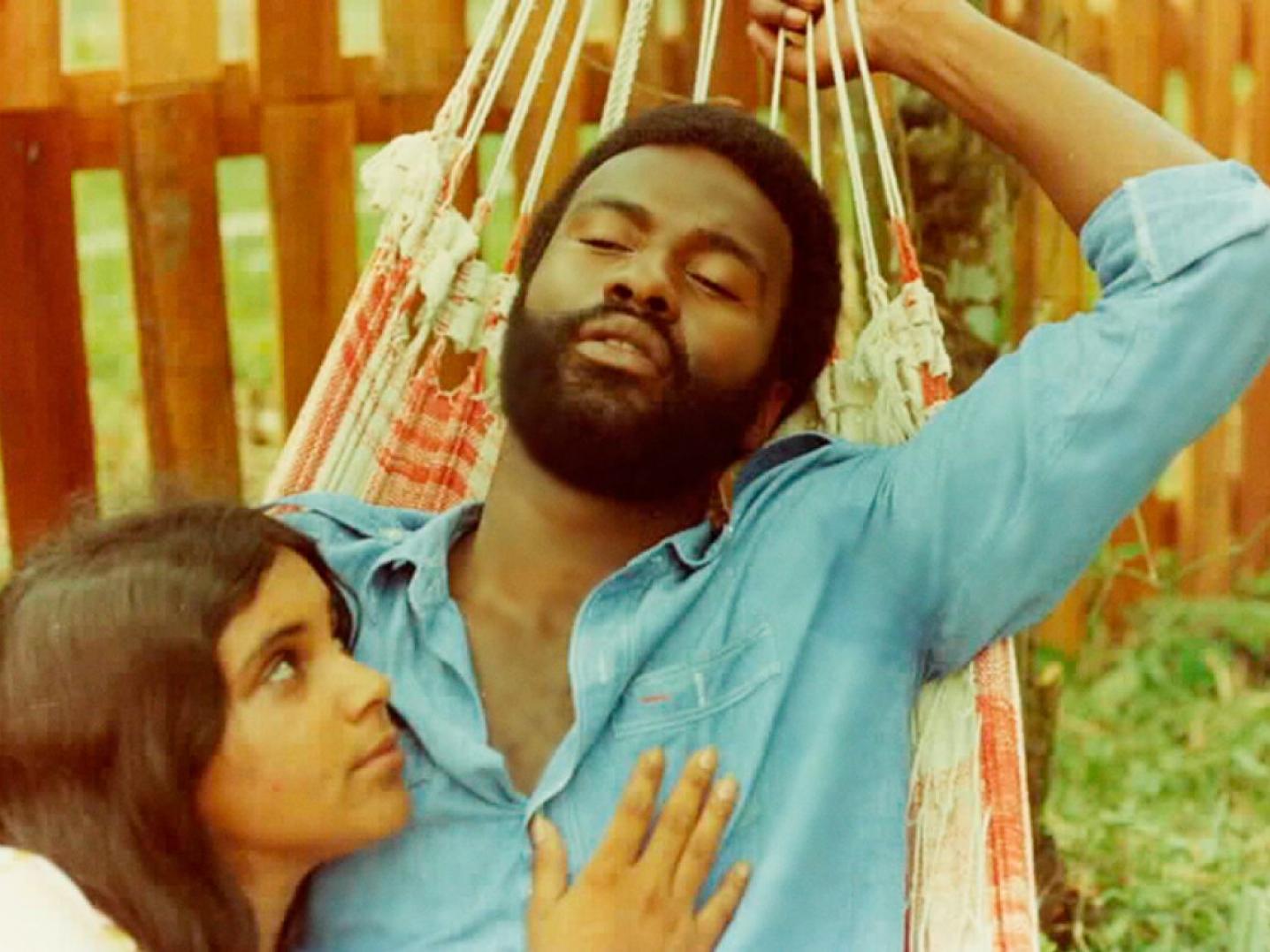
Wan Pipel
A cultural manifestation that is both nationalistic and critical about the ethnic division of the Surinamese population, is the infamous movie Wan Pipel (1976) by Surinamese-Dutch director Pim de la Parra (1940). It tells the story of Roy Ferrol, a Surinamese man who studies in the Netherlands and lives there with his Dutch girlfriend. When the death of his mother brings him back to Suriname, he falls in love with a Hindustani girl, Rubia, and rediscovers the beauty of his country. The love between Roy, as a creole Surinamese, and Rubia stirs the community and is not approved by their parents. The film shows how aversion and culture clashes amongst the different ethnicities in Suriname linger beneath the surface of a harmonious melting pot. There is hardly any doubt that the title of the movie refers to Dobru’s poem Wan Bon and questions it at the same time. Many of the topics that are addressed in the movie were relevant then and still are now; the quest for belonging that is experienced by both Surinamese people from the diaspora as well as the people within Suriname, the accidental clash of cultures and sadly also the poor financial situation that Suriname is in.
Wan Pipel is broadcasted on Surinamese television every 25 November. The film was restored by EYE Film Institute last year but has not been programmed recently. However, the full stream of Wan Pipel is available on the site of EYE Film Institute. It would be nice to take on the Surinamese tradition and collectively watch this movie on 25 November.
More to watch
Other current and future events and documents that will tell you more about Suriname and its history:
- Documentary maker Magda Augusteijn and video journalist Sam Jones made an interactive web documentary titled Casa Blanca that zooms in on life in Moengo, Suriname. Casa Blanca was supported by the DutchCulture Matching Fund. The documentary will premiere on 25 November in Vereniging Ons Suriname in Amsterdam.
- Vrienden van Stadsherstel Suriname made a series about important buildings and spaces of the historical city centre of Paramaribo: Futu Pasi. On 25 November the Futu Pasi episode is dedicated to Suriname's independence and will be about Paramaribo's independence Square.
- Journalist and filmmaker Hennah Draaibaar and her partner Eddy Wijngaarde are in the process of making a documentary on 45 years of independence of Suriname. The documentary will be broadcasted on Surinamese television and will be available online.
- Exhibition 100 jaar Surinamers in Nederland: emancipatie en strijd at Vereniging Ons Suriname, Amsterdam, and organised by The Black Archives, until 5 December 2020
- Exhibition Kerken en Slavernij at Luther Museum, Amsterdam, until 31 January 2021
- Exhibition Surinaamse School at Stedelijk Museum, Amsterdam, from 12 December until 31 May 2021
- Exhibition Slavernij at Rijksmuseum, Amsterdam, from 12 February until 30 May 2021
Do you want to know more about Dutch cultural activities in Suriname? Check out the complete overview of Dutch cultural activities in Suriname in our database.
If you are a cultural professional who wants to go to Suriname, feel free to contact our Suriname advisor Ashley Swagers.
